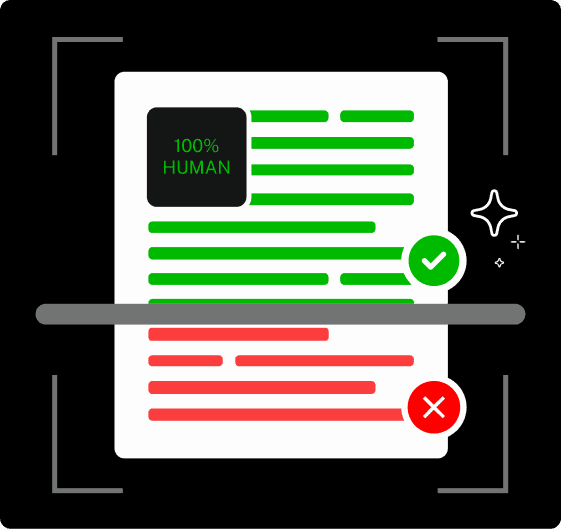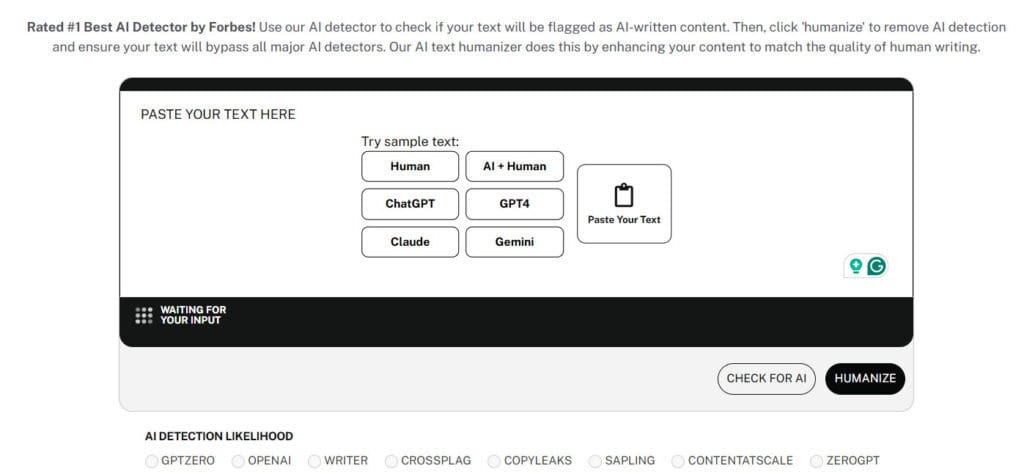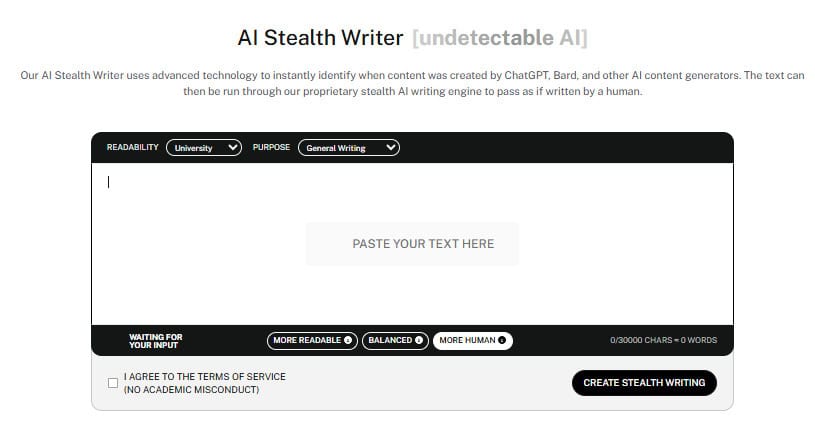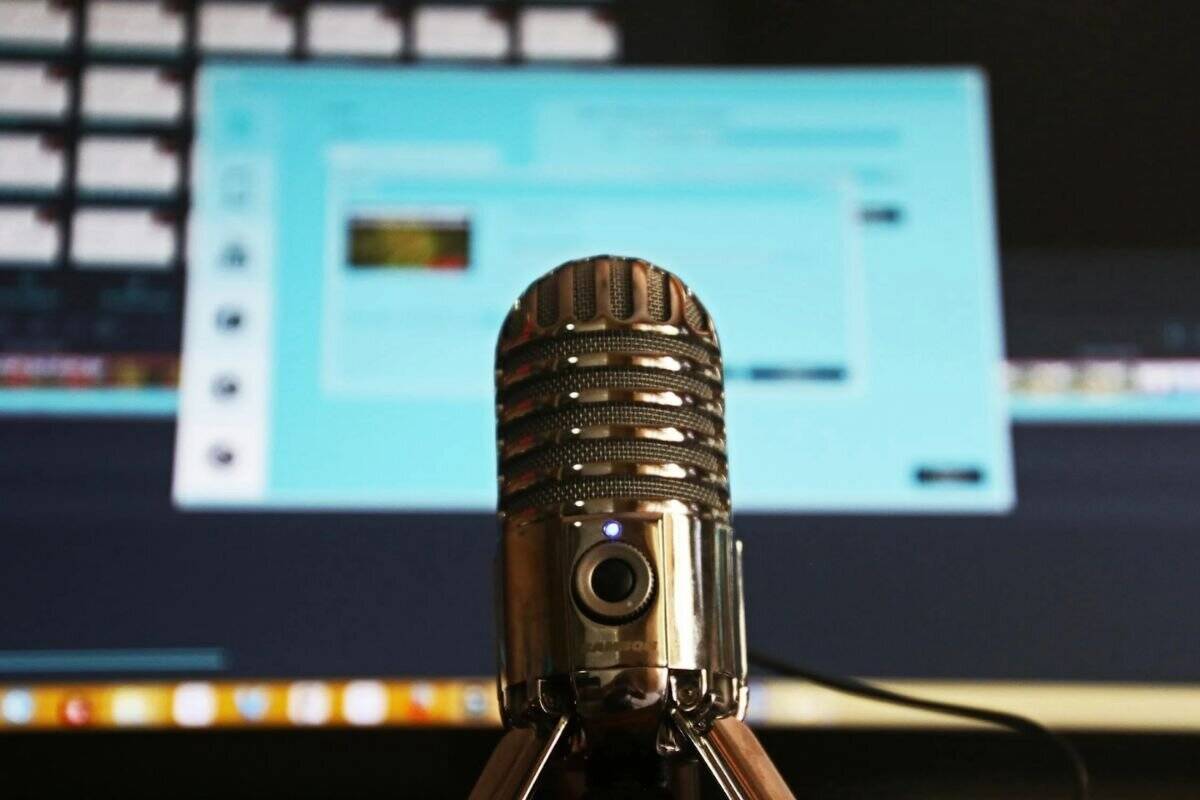ChatGPT is powerful but, naturally, also still limited in some ways. Despite being the frontrunner in AI tech, the platform still lacks many capabilities.
These include autonomous actions, deep file system integrations, limited web access, and much more.
That’s why many users, especially content creators, resort to using third-party platforms whenever they don’t see the feature they need in ChatGPT.
One of those is voice or audio transcription.
While ChatGPT has a dictation feature that lets you speak your input and convert it to text, it’s by no means a full transcription tool.
Yet it can work in tandem with other tools to help with transcription tasks.
To illustrate, we’ll look at practical workflows, limitations, and creative ways to transform your transcripts into valuable content.
Can ChatGPT Transcribe Audio?
The short answer: No, ChatGPT alone cannot directly transcribe audio files.
The longer answer: ChatGPT is a text-based model built to process and generate written language.
It doesn’t have the ability to listen or directly interpret audio files.


Never Worry About AI Detecting Your Texts Again. Undetectable AI Can Help You:
- Make your AI assisted writing appear human-like.
- Bypass all major AI detection tools with just one click.
- Use AI safely and confidently in school and work.
When you interact with ChatGPT, you’re doing so through typed prompts and receiving responses in kind.
There’s no built-in feature for uploading or converting audio in the standard web interface.
However, there’s more to the story.
OpenAI, the company behind ChatGPT, has also created a separate speech recognition system called Whisper.
It’s designed to transcribe audio with surprising accuracy, even when faced with accents, background noise, or niche terminology.
It’s not bundled into ChatGPT’s main features, but the mobile app version does include a light integration: you can speak into the app, and it transcribes your voice into text for the chatbot to process.
This isn’t a traditional transcription tool, but it’s worth using for casual, on-the-go use.
So, how do you actually transcribe audio using AI?
Here’s the ideal combo: Use Whisper (or any speech-to-text tool) to convert your audio into text. Then feed that output to ChatGPT for editing, cleanup, or even repurposing.
For instance, ChatGPT can summarize an article, restructure long-form interviews, or turn rough transcripts into readable content.
You can even take it a step further by using an AI voice to turn your polished transcript into narrated audio for podcasts or videos.
It’s a bit like prepping ingredients before you start cooking, where the AI helps best when it knows what it’s working with.
Just like some podcasts began as rambling voice notes, your voice-to-text ideas can turn into polished content with the right workflow.
How ChatGPT and Whisper Work Together for Audio Transcriptions

Think of Whisper as your ears and ChatGPT as your editor.
Whisper listens and captures what was said, while ChatGPT helps make sense of it.
Whisper excels at:
- Recognizing diverse accents and languages
- Filtering out background noise
- Handling domain-specific terminology
- Providing timestamp information
- Working with low-quality audio recordings
Once Whisper creates a raw transcript, ChatGPT can:
- Fix grammatical errors
- Improve sentence structure
- Remove filler words and repetitions
- Format the text for readability
- Extract key points and summaries
- Convert spoken language into more formal writing
This partnership creates a powerful workflow. Record your meeting, interview, or lecture, then run it through Whisper for transcription.
Then, take that transcript to ChatGPT and ask it to clean up the text, highlight important points, or even reorganize the content into a more structured format.
Insight7 automatically transcribes calls with high accuracy, capturing key moments and speaker clarity, but it doesn’t stop there. It goes beyond transcription to analyze and evaluate conversations, uncovering insights, patterns, and performance gaps that help teams improve faster.
The result? A polished transcript that captures not just the words but the meaning behind them.
What ChatGPT Can Do With Transcripts

Once you have a raw transcript, ChatGPT becomes an invaluable assistant.
Its natural language processing capabilities allow it to transform rough transcriptions into usable content in numerous ways.
Here’s what ChatGPT can do with your transcripts:
- Clean and polish the text. ChatGPT can remove verbal tics, fix grammar, and improve sentence structure while maintaining the original meaning.
- Summarize content. Have a 2-hour interview, but only need the highlights? ChatGPT can condense it into key points or an executive summary.
- Extract structured information. ChatGPT can identify and organize things like action items, decisions made, questions raised, or topics discussed.
- Format for different purposes. Need the transcript as a blog post? Or perhaps as bullet points for a presentation? ChatGPT can reformat your content accordingly.
- Generate follow-up questions. For researchers and journalists, ChatGPT can suggest additional questions based on the transcript’s content.
- Create derivative content. Transform your transcript into social media posts, newsletter content, or even script outlines for future recordings.
- Translate into other languages. If your audience is international, ChatGPT can translate your transcript while maintaining context and meaning.
The key is knowing what to ask.
Instead of just saying “clean up this transcript,” try specific requests like “format this interview transcript as a Q&A article” or “extract the three main arguments from this lecture and explain each one.”
Tools You Can Use to Transcribe Audio
Since ChatGPT can’t directly transcribe audio, you’ll need a dedicated tool for the first step of your workflow.
Here are some excellent options, including Whisper, which we mentioned above:
- OpenAI’s Whisper: Available through the API or as an open-source model you can run locally. It offers exceptional accuracy across multiple languages and handles challenging audio conditions well.
- Otter.ai: A popular cloud-based service with real-time transcription capabilities and speaker identification features.
- Rev.com: Offers both AI transcription and human transcription services for higher accuracy needs.
- Descript: A full-featured audio/video editor with built-in transcription that allows you to edit your media by editing the text.
- Google Speech-to-Text: Part of Google Cloud services, it offers robust transcription with customization options.
Once the audio is transcribed, bring the raw text into ChatGPT. This is where cleanup and transformation happen.
You can format, rewrite, or even write essays using ChatGPT based on the content. But don’t stop there.
The final, most crucial step? Run that polished draft through Undetectable AI’s tools.
These aren’t optional add-ons—they’re built to make your AI-assisted writing indistinguishable from human work.

Our AI Humanizer rewrites your content in a more human tone, smoothing robotic phrasing, breaking patterns, and varying structure, making it feel like a real person wrote it from scratch.

Our Stealth Writer adds nuance, emotion, and intention behind every line. It’s especially useful if you’re writing for clients, publishing online, or preparing for academic review.
This tool makes sure the content passes AI detection tools and feels naturally written, not generated.
So think of the full process like this: Transcribe → refine in ChatGPT → humanize for real-world use.
And if you’ve ever wondered how creators turn raw transcripts into polished lead magnets, this is the exact playbook they follow.
Also, if most of your content comes from YouTube videos rather than recorded audio, Undetectable AI’s Youtube Transcript Generator is a quick and reliable way to get editable, searchable transcripts in seconds.

Instead of manually typing out dialogue or relying on inconsistent auto captions, this tool automatically extracts every word from any YouTube video and formats it into clean, ready-to-use text.
You can then bring that transcript into ChatGPT to summarize, polish, or even transform it into SEO articles or social media posts.
It’s especially helpful for creators, educators, and researchers who analyze or repurpose YouTube content.
Just paste the link, generate the transcript, and you’ll have a complete text version of the video — no software installation or complicated setup required.
By pairing this with ChatGPT, you can turn existing video content into professional-grade written materials in minutes — perfect for blogs, study notes, or full-length guides.
Turn Transcripts Into Quality Content
Now that your audio’s been cleaned up and turned into text, don’t stop there. This is where your raw words get sculpted into something actually worth reading.
- Use Undetectable AI’s AI Essay Writer to transform interviews or podcasts into structured articles
- Generate social media posts using the AI SEO Writer
- Polish the final version with the Sentence Checker
This multi-tool approach ensures your content retains a natural tone while benefiting from AI assistance every step of the way.
The key is to use each tool for its strength: transcription software for converting audio to text, ChatGPT for organization and initial editing, and specialized tools for final polishing and repurposing.
Use Case Examples
Once you’ve transcribed audio and refined it in ChatGPT, this workflow opens up powerful possibilities across industries.
Here are just a few high-level ways it’s being used:
- Podcast Repurposing: Use the transcript of an interview or episode to generate blog posts, social captions, or newsletter content. This lets creators reach new audiences without recording more content. It’s a technique often used by those looking to extend their content’s shelf life.
- Academic Research Support: ChatGPT can analyze transcripts from interviews or focus groups to surface patterns, categorize responses, or generate summaries for reports or dissertations. This is a strategic way to automate the grunt work of qualitative research.
- Content Team Collaboration: Teams can turn meeting transcripts into project outlines, task lists, or even full documents.
- Language Learning Materials: Transcribed native speech becomes study content when ChatGPT identifies idioms, expressions, and embedded cultural cues. Teachers and learners alike benefit from context-rich input that goes way beyond textbooks.
- Medical & Technical Formatting: From clinical notes to tech interviews, transcripts can be formatted into professional templates with consistent sections, clear headings, and compliance-ready formatting—all with a few strategic prompts.
For freelancers, educators, marketers, and more, this process is also a way to make money using ChatGPT by turning raw audio into publishable, billable, or monetizable text.
Common Limitations & Workarounds
While this workflow offers powerful capabilities, it’s important to understand its limitations:
Accuracy with Specialized Terminology: Most transcription tools struggle with domain-specific jargon or technical terms.
If your content is highly specialized, create a custom dictionary of terms for better results, or be prepared to make manual corrections.
- Workaround: Train ChatGPT by providing examples of correctly spelled technical terms before asking it to clean up your transcript.
Speaker Identification: Basic transcription tools may not distinguish between different speakers reliably.
- Workaround: Use tools like Otter.ai that offer speaker identification or format your transcript with speaker names before processing with ChatGPT.
Context and Background Knowledge: ChatGPT may misinterpret ambiguous references or industry-specific context.
- Workaround: Provide brief context about the subject matter when giving ChatGPT a transcript to process.
Privacy Concerns: Sending sensitive audio or transcripts to third-party services raises privacy questions.
- Workaround: Use locally hosted versions of open-source tools like Whisper for sensitive content, or implement proper data governance policies.
Handling Emotional Nuance: Transcription misses tone, emphasis, and emotional context, which can be crucial.
- Workaround: Include notes about emotional cues in brackets within your transcript, or ask ChatGPT to focus only on factual content.
Understanding these limitations helps set realistic expectations and develop workflows that account for the technology’s current capabilities.
FAQs About ChatGPT and Audio Transcription
Can ChatGPT listen to my voice messages?
Nope. ChatGPT only processes text. You’ll need to transcribe your audio first, then paste the text into the chat.
Is there a plugin for transcription in ChatGPT?
Currently, no official plugin lets ChatGPT transcribe audio directly.
Some third-party tools might bridge this gap soon, but nothing native yet.
Can I upload audio files to ChatGPT?
Not at the moment.
The interface only supports text. Use a transcription tool first, then feed the result into ChatGPT.
Will audio transcription be added to ChatGPT?
Possibly. OpenAI already has Whisper and has expanded ChatGPT’s features over time.
But there’s no official word yet on when—or if—direct audio transcription is coming.
Talk Is Cheap…Until You Transcribe It Right
While ChatGPT doesn’t handle audio files natively, pairing it with transcription tools creates a smart, time-saving workflow.
Use apps like Whisper or Otter.ai to convert speech into text, then refine, reformat, or make money using ChatGPT by turning those words into finished content.
But before you hit publish, there’s one final step to complete the workflow: running your output through our AI tools at Undetectable AI.
Our AI Humanizer rewrites your content to sound more natural and less robotic, perfect for blogs, scripts, or reports.
Meanwhile, the Stealth Writer adds subtle rhythm, tone, and structure that helps content fly under the radar of AI detectors, especially useful for academic, editorial, or client-facing work.
This combo isn’t just about transcription—it’s about transformation.
From content creation to research and documentation, the right setup can turn your spoken ideas into something useful, publishable, and powerful.
Try out different transcription tools to see what fits your audio style.
Then, build a prompt library that helps ChatGPT process transcripts the way you need.
With a bit of practice and the right tools, your workflow will run like it’s been AI-powered all along.
Give our AI Detector and Humanizer a try in the widget below!
